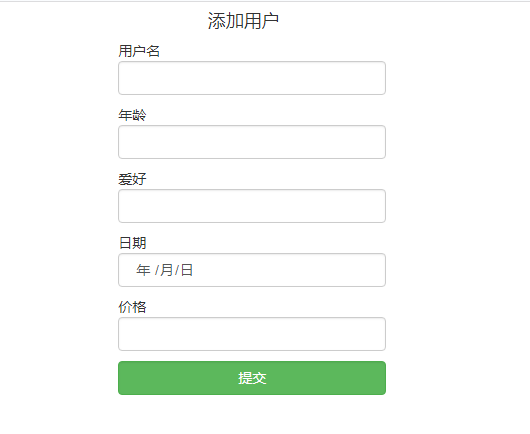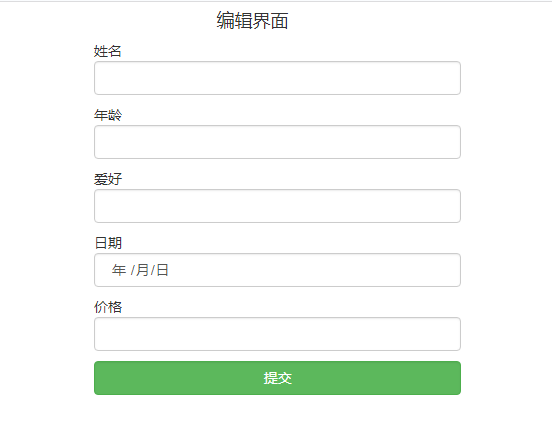本文目录
一.ORM简介
二.全局配置
三.搞搞搞
一.ORM简介
.ORM是“对象-关系-映射”的简称
.MVC或者MTV框架中包括一个重要的部分,就是ORM,它实现了数据模型与数据库的解耦,即数据模型的设计不需要依赖于特定的数据库,通过简单的配置就可以,轻松更换数据库,这极大的减轻了开发人员的工作量,不需要面对因数据库变更而导致的无效劳动.
二.全局配置
.单表是相对简单的Django项目,我们再次进行对单表的增删改查操作,话不多说,项目开始。
1.setting.py 文件配置静态路径。
setting.py
STATIC_URL = '/static/' STATICFILES_DIRS=[ os.path.join(BASE_DIR,'static'), ]
2.同时禁用setting.py文件里面 一个Csrf中间件。
setting.py
MIDDLEWARE = [ 'django.middleware.security.SecurityMiddleware', 'django.contrib.sessions.middleware.SessionMiddleware', 'django.middleware.common.CommonMiddleware', # 'django.middleware.csrf.CsrfViewMiddleware', 'django.contrib.auth.middleware.AuthenticationMiddleware', 'django.contrib.messages.middleware.MessageMiddleware', 'django.middleware.clickjacking.XFrameOptionsMiddleware', ]
3.我们在这里使用MySQL数据库,顺便先配置下。
setting.py
DATABASES = { # 'default': { # 'ENGINE': 'django.db.backends.sqlite3', # 'NAME': os.path.join(BASE_DIR, 'db.sqlite3'), # } 'default': { 'ENGINE': 'django.db.backends.mysql', 'NAME': 'db3', #数据库名称 'HOST':'127.0.0.1', #地址,默认 'PORT':3306, 'USER':'root', 'PASSWORD':'', #密码,我没设密码,用自己设置的密码 } }
4.在项目目录下找到__init__.py文件.(切记是在本项目的目录下)。这句话的作用是使用MySQL代替
sqlite3数据库。
__init__.py
import pymysql pymysql.install_as_MySQLdb()
总结:到此我们的项目已经基本配置完成了,需要注意的就是__init__.py文件的配置位置。
一。接下来就是写项目了。项目的基本流程是。URL进去--视图函数(返回相对应的页面)--前端返回数据--视图函数处理数据--保存进数据库。
.1.既然是要操作表格,那就必须要有表格是不是,那我们就先弄出一个表格出来,怎么弄呢??
别急,在弄出表格之前我们还有一步要走,生成app,这个可不是手机里的app哦。
指令
python manage.py startapp app01

这时就生成一个app了。我们生成表格就是在app里面的models文件里面编写。
.2 编写models.py
models.py
from django.db import models # Create your models here. class Book(models.Model): nid=models.AutoField(primary_key=True) name=models.CharField(max_length=64) age=models.IntegerField() hobby=models.CharField(max_length=32) date=models.DateField() price=models.DecimalField(max_digits=8,decimal_places=2)
.3.进行数据迁移命令:
python manage.py makemigrations
python manage.py migrate
.4.可以看到在app01的migrations文件里多出0001_initial.py这个文件,这个就是迁移记录。

.5.我们这里用可视化工具来看,步骤如下。
。1.pychram右上角点击打开“Database”。

。2.点击加号选择MySQL。

。3.下载驱动,配置相关信息。

。4.配置完成后点击“Test Connection”连接。这个就可以直观的看到表格吗,如下图:

二.写代码了.
1>.配置urls.py
urlpatterns = [ path('admin/', admin.site.urls), path('look_book/', views.look_book), #查 path('add_book/', views.add_book), #增 path('delete_book/', views.delete_book), #删 path('edit_book/', views.edit_book), #改 # path('index/', views.index), ]
2>.视图:
view.py
# 增加 def add_book(request): if request.method=='POST': nid=request.POST.get('nid') name=request.POST.get('name') age=request.POST.get('age') hobby=request.POST.get('hobby') date=request.POST.get('date') price=request.POST.get('price') Book.objects.create(nid=nid,name=name,age=age,hobby=hobby,date=date,price=price) return redirect('/look_book/') return render(request, 'add_book.html')
html
#增
<!DOCTYPE html> <html lang="en"> <head> <meta charset="UTF-8"> <link rel="stylesheet" href="/static/bootstrap-3.3.7-dist/css/bootstrap.css"> <title>添加用户</title> </head> <body> <div class="row"> <div class="col-md-3 col-md-offset-4"> <h4 class="col-md-offset-4">添加用户</h4> <form action="" method="post"> <p>用户名<input type="text" name="name" class="form-control"></p> <p>年龄<input type="text" name="age" class="form-control"></p> <p>爱好<input type="text" name="hobby" class="form-control"></p> <p>日期<input type="date" name="date" class="form-control"></p> <p>价格<input type="text" name="price" class="form-control"></p> <p><input type="submit" value="提交" class="form-control btn btn-success"></p> </form> </div> </div> </body> </html>
效果图:

#查
view.py
# 查看 def look_book(request): look_book=Book.objects.all() return render(request,'look_book.html',{'look_book':look_book})
html
#查 <!DOCTYPE html> <html lang="en"> <head> <meta charset="UTF-8"> <link rel="stylesheet" href="/static/bootstrap-3.3.7-dist/css/bootstrap.css"> <title>添加用户</title> </head> <body> <div class="row"> <div class="container"> <div class="col-md-8 col-md-offset-2"> <h4 class="col-md-offset-4">用户信息</h4> <table class="table table-striped table-hover table-bordered"> <thead> <tr> <th>id</th> <th>名字</th> <th>年龄</th> <th>爱好</th> <th>日期</th> <th>价格</th> <th>操作</th> </tr> </thead> <tbody> {% for book in look_book %} <tr> <td>{{ book.nid }}</td> <td>{{ book.name }}</td> <td>{{ book.age }}</td> <td>{{ book.hobby }}</td> <td>{{ book.date|date:"Y-m-d" }}</td> <td>{{ book.price }}</td> <td> <a href="/edit_book/?nid={{ book.nid }}" class="btn btn-success">编辑</a> <a href="/delete_book/?nid={{ book.nid }}" class="btn btn-danger">删除</a> </td> </tr> {% endfor %} </tbody> </table> </div> </div> </div> </body> </html>
效果图:

#改
view.py
# 改 def edit_book(request): if request.method=='POST': nid=request.POST.get('nid') name=request.POST.get('name') age=request.POST.get('age') hobby=request.POST.get('hobby') date=request.POST.get('date') price=request.POST.get('price') Book.objects.filter(pk=nid).update(name=name,age=age,hobby=hobby,date=date,price=price) return redirect('/look_book/') nid=request.GET.get('nid') editbook=Book.objects.filter(nid=nid).first() return render(request,'edit_book.html',{'editbook':editbook})
html
#改
<!DOCTYPE html> <html lang="en"> <head> <meta charset="UTF-8"> <link rel="stylesheet" href="/static/bootstrap-3.3.7-dist/css/bootstrap.css"> <title>编辑界面</title> </head> <body> <div class="row"> <div class="col-md-4 col-md-offset-3"> <h4 class="col-md-offset-4">编辑界面</h4> <form action="" method="post"> <p> <input type="hidden" name="nid" value="{{ editbook.nid }}"></p> <p>姓名 <input type="text" name="name" value="{{ editbook.name }}" class="form-control"></p> <p>年龄 <input type="text" name="age" value="{{ editbook.age }}" class="form-control"></p> <p>爱好 <input type="text" name="hobby" value="{{ editbook.hobby }}" class="form-control"></p> <p>日期 <input type="date" name="date" value="{{ editbook.date }}" class="form-control"></p> <p>价格 <input type="text" name="price" value="{{ editbook.price }}" class="form-control"></p> <p><input type="submit" value="提交" class="form-control btn btn-success"></p> </form> </div> </div> </body> </html>
效果图:

#删
view.py
# 删 def delete_book(request): nid=request.GET.get('nid') Book.objects.filter(nid=nid).delete() return redirect('/look_book/')